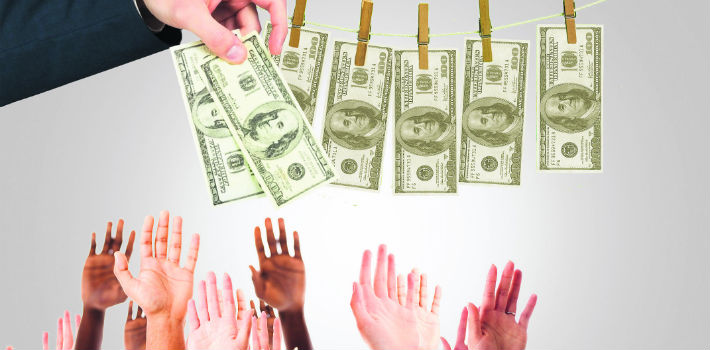
EspañolIn the wake of the agreement allowing US-headquartered auto manufacturer Ford Motor Company to sell cars for US dollars in Venezuela, residents of the South American nation have claimed it has become “impossible” to buy a vehicle this way, as access to tightly controlled foreign currency gets more difficult every day.
On Tuesday, May 19, union leaders reported that other car assembly plants operating in Venezuela such as General Motors and Chrysler are evaluating whether to follow suit and start dealing in dollars, in an effort to secure enough foreign currency to import raw materials and escape the bolívar’s rampant inflation.

Despite this workaround, Ford estimates it will sell only 3,000 cars every month, while it has the potential to produce up to 24,000 monthly units in normal conditions.
The slump in international oil prices, added to an already limited supply of foreign currency, has forced the socialist government to slash the provision of dollars to the private sector for basic imports.
A top manager from one of the affected firms, who wished to remain anonymous, told the PanAm Post that the decision to switch to the US currency follows the Venezuelan government admitting it doesn’t have enough dollars to repay the three-year-old debt it has incurred with car manufacturers.
Assembly lines have practically stopped, he confided, because foreign firms who supply raw materials to Venezuela have cut their credit lines. The sale of cars directly in US dollars represents a way out of the impasse, as it would allow production to resume and build up trust abroad to regain credit.
Ford’s agreement stipulates that a percentage of cars produced must continue to be sold in bolívares. However, because prices will be calculated according to the Simadi rate (currently at 200 Bs. per dollar), the cars will remain out of reach for most Venezuelans.
The measure has been met with harsh criticism, with multiple voices claiming it constitutes discrimination and won’t make cars any more available in Venezuela.
Economist Anabella Abadi argued it will deepen inequality between the rich and the poor: “Venezuela allegedly has one of the lowest Gini ratios, but this is just discriminatory against the population.”
Luis Vicente León, head of consulting firm Datanálisis, suggested that the sale of cars with price tags in dollars isn’t a prelude to a general dollarization of the economy. “It’s a segmentation that creates a dual economy: sectors in dollars and sectors in bolívares.”
Parallel and “Feudal” Economy
Even though Venezuela’s official currency is the bolívar, the Maduro administration has allowed the sale of goods it considers non-essential, such plane tickets, in dollars.
However, non-essential goods and services in Venezuela mostly hinge on imported raw materials, and therefore they end up being priced in US dollars anyway, at the more expensive Simadi rate. A basic property can easily cost 20 million Bs. (US$100,000), an unattainable sum for Venezuelan’s earning on the average monthly minimum wage of 6,746 Bs. ($33).
For economist Boris Ackerman, head of the Economics department at Simón Bolívar University, the national currency no longer meets the fundamental requisites for it to function properly as money.
Money, he told the PanAm Post, must be valued by many, be scarce so it doesn’t lose value, durable, transportable, divisible, and transferable. However, the bolívar has devalued so much that it no longer fulfills those functions.
He explained that the central bank’s printing of bolívares is out of control, and it has ceased to be transportable and transferable because it’s no longer accepted outside Venezuela’s borders.
The economist warned that the Venezuelan government is implementing a feudal-like system, whereby the state pays citizens with “chips” that have no value, and only the select few can get their hands on strong currency like the dollar.
Rather than gradual dollarization, Ackerman thinks the government — like that of Cuba — has created “two Venezuelas”: one in bolívares and another one in dollars.
According to the economics professor, the “Venezuela in bolívares” is marked by low state and private wages, regulations, forex controls, lines, and shortages. In contrast, the “Venezuela in dollars” is populated by the privileged who get state benefits, receive remittances from relatives living abroad, or the minority who work for foreign firms.
“The situation of [durable] goods in Venezuela is the same with US dollars, there’s little supply and high demand; that’s why they cost so much, and they’re priced at black-market rates,” he said.
Madurismo: sistema donde unos pocos con $ compran carros y viajan. El resto con bolívares no encuentra leche, café, azúcar …..
— Víctor Salmerón (@vsalmeron) May 17, 2015
“Madurism: a system where a minority with dollars buy cars and travel. The rest who use bolívares cannot find milk, coffee, sugar…”
More Like Cuba Every day
Ackerman believes Venezuela is heading toward either one of two paths: the Cuban or the Chinese model, but he is inclined to believe the Maduro administration is trying “to convert Venezuela’s economy into Cuba’s.”
On the communist island, the Castros had to find a way for its citizens to survive, Ackerman explains. It decided to “open small safety valves” like the Varadero beaches and allowed relatives abroad to send remittances. This permitted the dollarization of just one portion of the economy, while most Cubans earned in local currency.
The professor points to a “[classical] liberal vision” as a potential solution to Venezuela’s woes: currency controls would disappear and a strengthened republic based on respect for economic freedom would uphold a stronger currency.
 Versión Español
Versión Español













